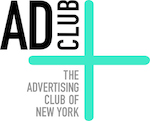How Digital Helps Brands Reconnect: A Q&A with Oath and Wells Fargo
John Piontkowski, Oath: Consumer trust can be especially difficult to maintain in the financial services industry. In fact, a recent Customer Quotient study found less than half of consumers would recommend their financial services provider. Highly publicized negative events involving banks and their customers have fed into the skepticism consumers feel toward financial institutions, with 44% of Americans believing they can’t trust these brands, according to a the 2017 Edelman Trust Barometer.
Many financial services brands are leveraging digital advertising as an avenue to earn consumer confidence or, in several cases, win it back. After Wells Fargo was fined for illegal sales practices in 2016, they increased their ad spend across digital media and mobile apps in the following year.
Wells Fargo’s “Re-Established” campaign, launched earlier this month, is a necessary mea culpa in an effort to mend customer relationships through ad placements in nearly every major channel, with digital at the forefront. I had the opportunity to sit down with Michael Lacorazza, Head of Integrated Marketing at Wells Fargo, to talk about their advertising strategy overall.
John: Michael, at a high level what are the most important advertising strategies for Wells Fargo?
Michael Lacorazza, Wells Fargo: Digital, and mobile in particular, are important because they are channels where we can connect with our audience with scale.
John: Let’s talk about the strategy behind Wells Fargo’s “Re-established” campaign across channels.
Michael: The “Re-established” campaign signals that it’s a new day at Wells Fargo, and the company is ready to emerge from a challenging period in its history. To emerge as a better, customer-focused company. Each channel plays a role in communicating the story in a way that considers what audiences expect and is designed to show up with relevance.
John: What metrics are you using to measure trust and reputation points?
Michael: We have a robust measurement plan that evaluates attitudinal shifts, business outcomes and engagement as well as operational metrics.
Engagement is an important performance signal. We look at content consumption behavior, from when the ad is delivered, through the click on a call-to-action to visit a richer content experience, and beyond. In this case, we prioritize click-through and audience quality. It’s about how many of the right people take the next step and then what they do after the experience.
John: Why did you choose Oath as a partner?
Michael: Oath can deliver our content at scale in brand-safe, premium environments. We can reach our audience on quality, premium content like the homepages of Yahoo, Yahoo Sports, Yahoo Mail, MSN and more. We like the engagement metrics we have seen to date with Oath’s unique ad formats. How content is delivered and consumed is as important as the scale. Overall, it’s about impact for us.
John: What initial results (if any) can you share so far?
Michael: The initial results are positive. We’ve seen an increase in site visits by 2x or 3x when running premium takeovers with Oath, which is pretty exceptional. Additionally, people are spending twice as much time on the site as they did during previous brand campaigns. Our hypothesis is that this is about getting the right people to the site experience and designing relevant content. We’re eager to see what the future brings as we continue to partner with Oath.
